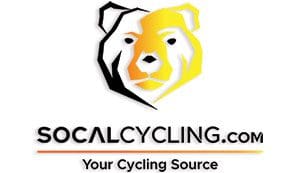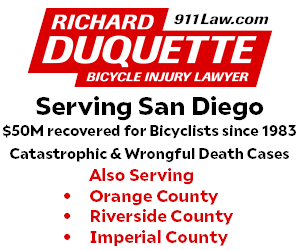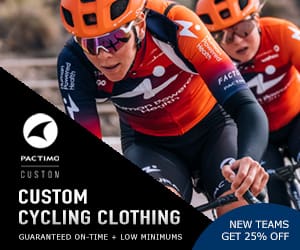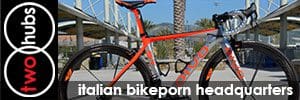Kelly Benefit Strategies and World Bicycle Relief Zambia Trip
By Neil Shirley
11/10/09 - In his presentation at the Kelly Benefit Strategies February training camp, FK Day announced that KBS was partnering with World Bicycle Relief to raise funds throughout the season to support WBR’s work in Zambia. Besides having the opportunity to raise funds for WBR, some of the riders were going to be selected to travel to Zambia at the end of the season to see first hand what the fundraising had helped accomplish and also to see what else we could do in the future to further the organization. At that time the team set a fundraising goal to raise $100,000 by the end of the year.
I was ambitious from the beginning with the fundraising efforts and was hoping I would be one of the KBS riders selected to represent the team in Zambia. I found out in July that I would indeed be making the trip along with teammates Alex Candelario, Scott Zwizanski, and Reid Mumford. Also making the trip was John Kelly, CEO of Kelly Benefit Strategies and the driving force behind the partnership between KBS Pro Cycling and WBR. FK Day, founder of WBR, and SRAM would be meeting us in Zambia.

This bike is put to good use, transporting 200 lbs of charcoal.
photo © Neil Shirley
After twenty-six hours of travel and four flights we finally arrived in the capitol city, Lusaka. We got to the hotel just in time to head off to bed for a good nights sleep before the adventure really began.
We met with Dave Neiswander from WBR, who lives in Lusaka, to go over our itinerary for the next ten days. He explained to us the three different programs that WBR has broken their bike distribution into. The first, RAPIDS is a USAID funded program in which caregivers are given bikes to help treat HIV/AIDS. Since nearly 20% of Zambians are infected with HIV, consistent health care is vital to keeping those infected as healthy as possible.
The second program is microfinance in which bicycles are provided for purchase through small loans. Since the average Zambian makes less than $2.00 per day, a $134.00 bicycle would be virtually unattainable without the mirco-loans. With microfinancing Zambian entrepreneurs are able take a small loan out for the bike and repay it at a rate that is affordable to them.
The third program is education. In many villages school children might have to walk hours a day to get to and from school. Children, and especially girls, are frequently pulled out of school to help with family duties. The goal of this program is to use bicycles to keep children in school and therefore help break the cycle of poverty caused in part by lack of education. Through the combination of these three programs WBR has focused their efforts to try and provide 50,000 bikes to the people of Zambia.

World Bicycle Relief makes a difference by giving bikes to school children in Zambia.
photo © Neil Shirley
After our meetings it was time to go out into the field. Only fifteen kilometers out of the modern city of Lusaka countryside was a different story. We went from an urban city to wide open country dotted with thatch huts, dirt paths and no modern conveniences.
On our first trip into the field we visited Mercy Ministries, a community center that includes both a school and student housing. When we first arrived I had no idea that most of these kids, ranging from four to eighteen years old, were orphans and had lost both parents to AIDS or other diseases. After everything that these children have lost they still seemed happy and grateful for what they did have, namely a roof over their heads and people who cared for them. While there, we met one of the kids that has grown up in the community and was fortunate enough to receive a WBR bike two years ago. He has been able to use the bike to make the 40-kilometer round-trip ride to high school everyday. Going to high school is an opportunity that most Zambians don’t get due the limited number of schools thus resulting in extremely long trips for many students.
Next on the agenda was a tour of the WBR warehouse, bicycle assembly and distribution facilities. Instead of collecting used bikes from the US or using stock parts that were already available WBR chose to use components designed specifically for the demands of Africa. Bikes manufactured for the American and European market simply cannot withstand the rigors of the environment in Zambia. To have a bike that can meet the needs of the end user they have every component of the bike built to their specifications. It is a lot more work for WBR to control each and every component of the bike but the end result is a quality bike that they feel confident will meet the harshness of daily life. By shipping in the components and assembling the bikes locally it adds much needed jobs to the local economy.

Kelly Benefit Strategies Team were recently in Zambia helping World Bicycle Relief
distribute bikes. This 17 year old rides 40K round trip every day for high school.
photo © Neil Shirley
Once we left the warehouse it was time for us to get our hands greasy and assemble our own WBR bike. We would then ride the same bike 45 kilometers into the villages the next day. We had added incentive to do a thorough job assembling our bikes to make sure we didn’t have a mechanical mishap in the middle of nowhere. Fortunately we had a few WBR trained mechanics on hand to help us through the assembly and final adjustments. The assembly went quickly since the bike’s only brakes are coaster brakes in the rear hub and there are not any gears. These 55-pound workhorses aren’t designed to win any races or sprint up mountains. These bikes can carry some really heavy loads over difficult and unforgiving terrain while giving the rider years of dependable service.
The next day we threw a leg over our trusty rides and headed towards the town of Chongwe. On our way to Chongwe we met up with a few coal riders. Coal riders, as they’re called, are riders carrying huge bags of charcoal that they take from one town to the next to sell. These men often times ride up to 70 kilometers every day carrying over 200 pounds of charcoal on the back of the bike. I decided to try riding one of their bikes loaded with coal. Once I got going it wasn’t too bad but my legs burned with every slight rise in the road. When I decided it was time to trade back bikes I stopped and that was a bad idea! With so much weight stacked up high the bike tipped over and there was nothing I could do about it. Half of the coal load fell to the ground. After some good-natured heckling from my teammates I helped put the load back together and gladly took my bike back. A 55-pound bike never felt so light. These coal riders are the perfect example of how the microfinance segment of the program works. By getting a bike that is dependable they are able to be more efficient with their time and make more money each week. It also opens up more jobs to people that may not have had the access to a bicycle before. With small re-payment amounts it makes it easy for the entrepreneur to take advantage of the program.
Once we made it to Chongwe we saw the RAPIDS segment of the WBR program, the caretakers. RAPIDS (Reaching HIV/AIDS Affected People with Integrated Development and Support) is a USAID funded group of volunteer caregivers and educators. We met up with six of the caretakers for the area and rode with them on a rough dirt road into the Bimbe region, 13 kilometers off the main road. The caretakers work on an entirely volunteer basis and most times don’t even have the most basic of supplies to help the people they’re visiting. Small things such as cotton balls and bandages are not always available to them. Their main job is to travel into the remote villages and visit the sick that do not have any means of transportation. Before the caretakers had access to the WBR bikes most of them would walk their routes. With access to a bicycle they can visit their clients on a more frequent basis.
After leaving the caregivers we rode our bikes to Harmos, a micro-finance office. They had pre-arranged the sale of our used WBR bikes for a discounted rate. Customers were lined up to take advantage of the cost savings. This would be the first bicycle for most of the customers I talked to but there was one exception. “Bicycle Joe” as the locals call him was purchasing his fifth WBR bike. His business is selling piglets to a neighboring town. He used to walk from his village carrying two piglets and arrive in town that evening to sell his piglets and then walk back home the next day. After he bought his first bike through micro-finance he could do the same trip in one day instead of two. Bicycle Joe began making the roundtrip daily and was able to sell twice as many piglets because of it. Next, he bought his wife a bike so she could ride with him and take produce to sell in the market. After that he decided to buy more bikes and hire employees to help him with delivery of piglets. Stories such as Bicycle Joe’s are becoming more and more prevalent with the help of the micro-finance program.
The next day was the most inspiring day for just about everyone in the group. We went to a school in the Bimbe district, a rural area that was made up of villagers relying on subsistence farming. Before we arrived, the school administrators selected fifty students with the criteria based on the distance the child traveled to school and their commitment to their studies. Those students received WBR bikes that were purchased from money raised during the 2009 racing season by the Kelly Benefit Strategies Pro Cycling Team. Handing a bike to a child and knowing the impact it can have on their life was one of the most amazing things that I’ve felt. The children treated us to singing, dancing and a short skit after all the bikes were distributed.
Once we were finally pried away from the Bimbe School we drove back into the town of Chongwe to meet a WBR trained mechanic. WBR trains one mechanic for every fifty bikes they distribute. The mechanic we visited had quite an amazing success story. After taking a weeklong WBR mechanics class he decided to open his own repair and supply shop in the local market. He has been so successful that he now has a second shop in the market and two employees. It is impressive in a country with such limited resources to go from unemployed to a business and property owner in two years.
With the trip coming to a close we reflected back on the past ten days and what we had done. We had experienced so much in such a short time that much of it hadn’t had a chance to sink in. I looked forward to spending some time at home absorbing the trip. I think that bringing back our stories to our friends and family is the most important part in enabling the work to continue and grow. It is a privilege to be involved with organizations like WBR and World Vision and I’m proud to be part of something bigger than bike racing. One of the most important things I realized while on the trip is that just a little bit goes a long way in Zambia.
What better Christmas present to give this year than a World Bicycle Relief bike donation in the name of a family member? I know that’s what my whole family is getting. For more information about World Bicycle Relief or if you would like to donate go to worldbicyclerelief.org experience the power of bicycles.
For the full article and more pictures, check out the next issue of ROAD Magazine.






